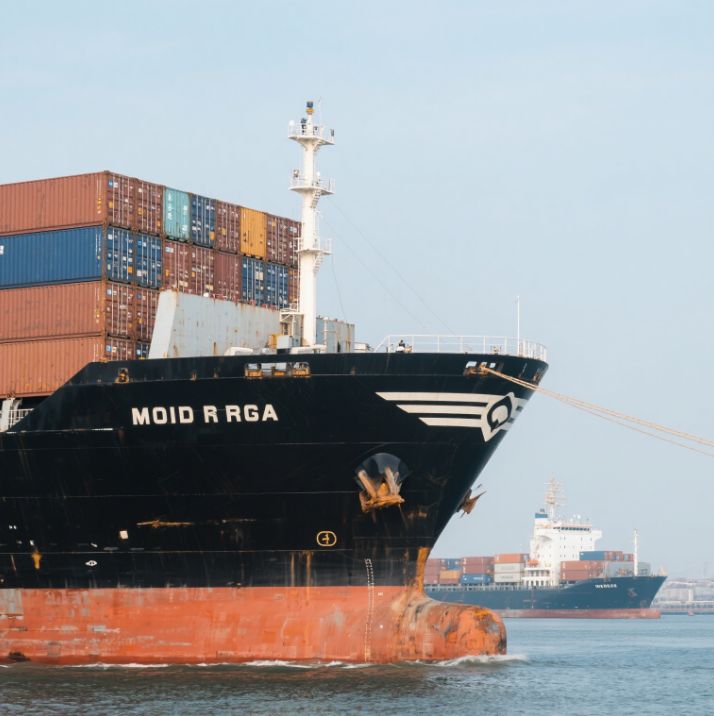LCL Sea Shipping from China: A Smart Choice for Small Shipments
Release time:
2025-10-06
LCL Sea Shipping from China: A Smart Choice for Small Shipments
In today’s global marketplace, businesses and individuals increasingly rely on efficient and cost-effective shipping methods to import products from China. Among these methods, **Less than Container Load (LCL) sea shipping** has emerged as a smart choice for small shipments. This article delves into the numerous benefits of LCL shipping, best practices for optimizing this method, and answers common questions to help you make informed decisions.
Understanding LCL Sea Shipping
Less than Container Load (LCL) shipping refers to the transportation of cargo that does not fill an entire shipping container. Instead, multiple shipments from different customers share a single container, allowing for a more economical and flexible shipping solution. This method is particularly advantageous for small businesses or individuals seeking to import smaller quantities of goods without the high costs associated with **Full Container Load (FCL)** shipping.
Benefits of LCL Sea Shipping
Choosing LCL sea shipping offers several distinct advantages:
1. Cost-Effectiveness
One of the primary reasons businesses opt for LCL shipping is the cost savings. By sharing container space with other shipments, you only pay for the portion of the container your cargo occupies. This makes LCL an ideal choice for small shipments that wouldn’t fill an entire container.
2. Flexibility in Shipment Sizes
With LCL shipping, businesses have the flexibility to import a variety of shipment sizes. Whether you need to ship a few boxes or several pallets, LCL accommodates your needs without forcing you to commit to the larger costs of FCL shipments.
3. Reduced Shipping Times
LCL shipping often provides faster transit times compared to air freight, especially for medium-distance shipments. This is due to the streamlined processes that shipping companies have developed to handle shared container loads efficiently.
4. Environmentally Friendly Option
By consolidating shipments, LCL shipping helps reduce the carbon footprint associated with transportation. Shared containers mean fewer trips and less fuel consumption, making it a more sustainable choice for environmentally-conscious businesses.
How LCL Shipping Works: A Step-by-Step Guide
Understanding the process of LCL shipping can help you navigate it more effectively. Here’s a breakdown of the steps involved:
Step 1: Find a Reliable Freight Forwarder
The first step in utilizing LCL shipping is choosing a reputable **freight forwarder**. They will assist you in managing logistics, documentation, and customs clearance, ensuring a smooth shipping experience.
Step 2: Prepare Your Goods for Shipping
Ensure that your products are properly packed and labeled. Proper packaging will help protect your goods during transit, and clear labeling will streamline the customs process.
Step 3: Book Your Shipment
Once your goods are ready, book your shipment with your freight forwarder. They will provide you with shipping options, including estimated costs and transit times.
Step 4: Customs Documentation
Your freight forwarder will typically handle customs documentation, but it’s essential to provide them with accurate information regarding the contents of your shipment. This includes invoices, packing lists, and any necessary permits.
Step 5: Cargo Consolidation
After booking, your cargo will be consolidated with other shipments at a **consolidation warehouse**. This is where multiple small shipments are combined into a single container.
Step 6: Shipping and Tracking
Your consolidated cargo is then shipped by sea. Most freight forwarders provide tracking services so you can monitor the progress of your shipment in real time.
Step 7: Customs Clearance and Delivery
Upon arrival at the destination port, your shipment will go through customs clearance. After clearance, your goods will be delivered to your specified location.
Common Challenges in LCL Shipping and How to Overcome Them
While LCL shipping offers many benefits, it also comes with its challenges. Here are some common issues and tips for overcoming them:
1. Longer Transit Times
Due to the nature of shared container shipping, LCL shipments might experience longer transit times compared to FCL shipments. To mitigate this, book your shipments well in advance and choose carriers known for their efficiency.
2. Risk of Damage
With multiple shipments in one container, there’s a higher risk of damage. Ensure your goods are packed securely and consider purchasing insurance for added protection.
3. Complex Documentation
Customs documentation can be intricate. Work closely with your freight forwarder to ensure all paperwork is accurate and complete to avoid delays.
4. Potential for Higher Costs with Frequent Shipments
If you frequently ship small quantities, costs can accumulate. Evaluate the feasibility of consolidating shipments to reduce expenses over time.
Best Practices for LCL Sea Shipping
To maximize the benefits of LCL shipping, consider these best practices:
1. Choose the Right Freight Forwarder
Partnering with an experienced freight forwarder can simplify the logistics of LCL shipping. Look for one with positive reviews, industry expertise, and comprehensive services.
2. Optimize Packaging
Invest in durable packaging to protect your goods. Use appropriate materials to minimize the risk of damage during transit.
3. Stay Informed About Customs Regulations
Research customs regulations in your destination country. Being informed will help you prepare the necessary documentation and avoid potential issues.
4. Schedule Shipments Strategically
Plan your shipments around peak seasons. Understanding shipping trends can help you avoid delays and better manage costs.
Cost Factors to Consider for LCL Shipping
When estimating the cost of LCL shipping, several factors come into play:
1. Volume and Weight
Shipping costs are typically based on either weight or volume, depending on which is greater. Be sure to understand how these metrics apply to your shipment.
2. Origin and Destination Ports
Costs can vary significantly based on the ports involved. Research the most economical routes for your specific needs.
3. Additional Fees
Be aware of potential surcharges, such as terminal handling fees, customs duties, and insurance costs. Understanding the full scope of fees will help you budget accurately.
4. Seasonal Fluctuations
Shipping costs can fluctuate based on the time of year. Planning ahead can help you avoid higher rates during peak shipping seasons.
FAQs About LCL Sea Shipping from China
1. What is LCL shipping?
LCL shipping refers to the transportation of cargo that does not occupy an entire shipping container. Multiple shipments are consolidated into one container, making it a cost-effective solution for small shipments.
2. How does LCL shipping differ from FCL shipping?
FCL (Full Container Load) shipping involves renting an entire container for your shipment, while LCL shipping allows you to share container space with other shipments, resulting in lower costs for smaller loads.
3. What are the typical transit times for LCL shipping?
Transit times for LCL shipping can vary based on the origin and destination ports, but they generally range from a few weeks to over a month, depending on shipping schedules and port congestion.
4. Is insurance necessary for LCL shipments?
While not mandatory, purchasing insurance for LCL shipments is highly recommended to protect against potential loss or damage during transit.
5. Can I track my LCL shipment?
Yes, most freight forwarders offer tracking services that allow you to monitor the progress of your LCL shipment in real time.
Conclusion
LCL sea shipping from China provides an efficient and economical option for small shipments. With its flexibility, cost-effectiveness, and environmental benefits, it stands out as a smart choice for businesses and individuals alike. By understanding the process, overcoming challenges, and adopting best practices, you can optimize your shipping experience and ensure the successful transport of your goods. Whether you are just starting your import journey or looking for ways to enhance your logistics strategy, LCL shipping is a viable solution worth considering.
RELATED BLOG
LCL Sea Shipping from China: A Smart Choice for Small Shipments
LCL Sea Shipping from China: A Smart Choice for Small Shipments In today’s global marketplace, businesses and individuals increasingly rely on efficient and cost-effective shipping methods to import products from China. Among these methods, **Less than Container Load (LCL) sea shipping** has emerged as a smart choice for small shipments. This article delves into the numerous benefits of LCL shippi
View Details









